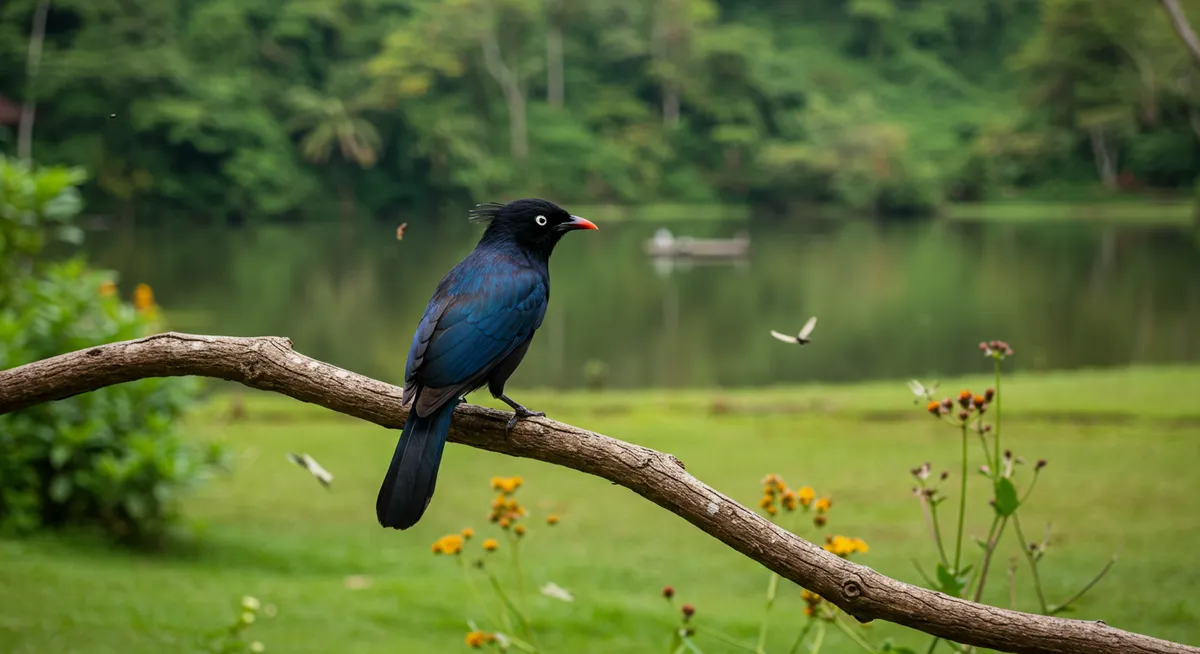
Wildlife Spotting Candidasa: Your Essential Guide
Table of Contents
Want to find the best nature experiences for this destination? Chat with our nature tourism specialist!
Get Nature TipsCategory: wildlife-spotting-candidasa
Unveiling Candidasa's Natural Wonders
Having spent significant time exploring Bali's lesser-known corners, I can confidently say Candidasa offers some truly incredible encounters with nature. This guide will help you master the art of wildlife spotting Candidasa, ensuring memorable observations while respecting the local ecosystem and its diverse inhabitants.
Marine Marvels: Coastal and Underwater Spotting
Candidasa's coastal areas and vibrant reefs are prime locations for marine wildlife spotting. From colourful reef fish darting among corals to graceful sea turtles gliding through the water, the underwater world is teeming with life. For instance, exploring the nearby snorkeling spots like Blue Lagoon or Amuk Bay often yields sightings of moray eels, clownfish, and various nudibranchs. Furthermore, keep an eye on the shorelines during low tide; you might spot small crabs, hermit crabs, and even local wading birds foraging. My personal tip is to always carry a waterproof camera; the photographic opportunities are endless. You can learn more about specific top snorkeling spots in Candidasa to maximize your chances.
Birdwatching & Terrestrial Creatures Inland
Beyond the ocean, Candidasa's lush inland areas offer fantastic opportunities for terrestrial wildlife spotting. Take a stroll along rice paddies or venture into the nearby hills, and you're likely to encounter a variety of bird species, from vibrant kingfishers and elegant egrets to swift swallows. Monitor lizards are also a common sight, often seen basking in the sun or moving stealthily through the undergrowth. Additionally, look out for playful macaques in areas bordering forests – just remember to observe from a distance and avoid feeding them. A good pair of binoculars significantly enhances your experience when trying to identify distant birds. Discover the broader Candidasa nature attractions that host these amazing creatures.
Nighttime Nature: Observing Nocturnal Life
The magic of wildlife spotting Candidasa doesn't end when the sun sets; a whole new world awakens. With a reliable flashlight, gentle exploration around your accommodation or along quiet village paths can reveal fascinating nocturnal creatures. Geckos are abundant, often seen hunting insects near lights. You might also hear or even glimpse various frog species, especially after rain, and discover interesting insects and moths drawn to evening blooms. Occasionally, shy civet cats might be spotted foraging in the darkness, though they are quite elusive. Remember to move quietly and avoid disturbing any animals you encounter. Consider exploring hiking trails near Candidasa for potential nighttime adventures, always with a local guide for safety.
Ethical Wildlife Observation Practices
Responsible wildlife spotting is paramount to preserving Candidasa's delicate ecosystems. Always maintain a respectful distance from animals, especially during nesting or feeding times. Never attempt to feed wild animals, as this can alter their natural behaviour and make them dependent on human interaction, which is detrimental to their survival. Furthermore, ensure you leave no trace behind; pack out everything you pack in. Supporting local guides who understand the environment also contributes positively to conservation efforts. As a seasoned traveler, I always advocate for minimal impact wildlife encounters. Respecting these guidelines ensures that future visitors can also enjoy the incredible natural beauty and wildlife of Candidasa.
Frequently Asked Questions
What kind of marine life can I see while snorkeling in Candidasa?
Are there any dangerous animals to be aware of in Candidasa?
Candidasa truly offers a captivating experience for nature enthusiasts eager for wildlife spotting. By understanding where and when to look, and critically, by practicing ethical observation, you can enjoy unforgettable encounters with Bali's diverse flora and fauna. Embrace the tranquility and natural beauty, ensuring your presence helps protect these precious habitats for generations to come. Plan your adventure and discover the hidden wonders of Candidasa's wildlife firsthand.